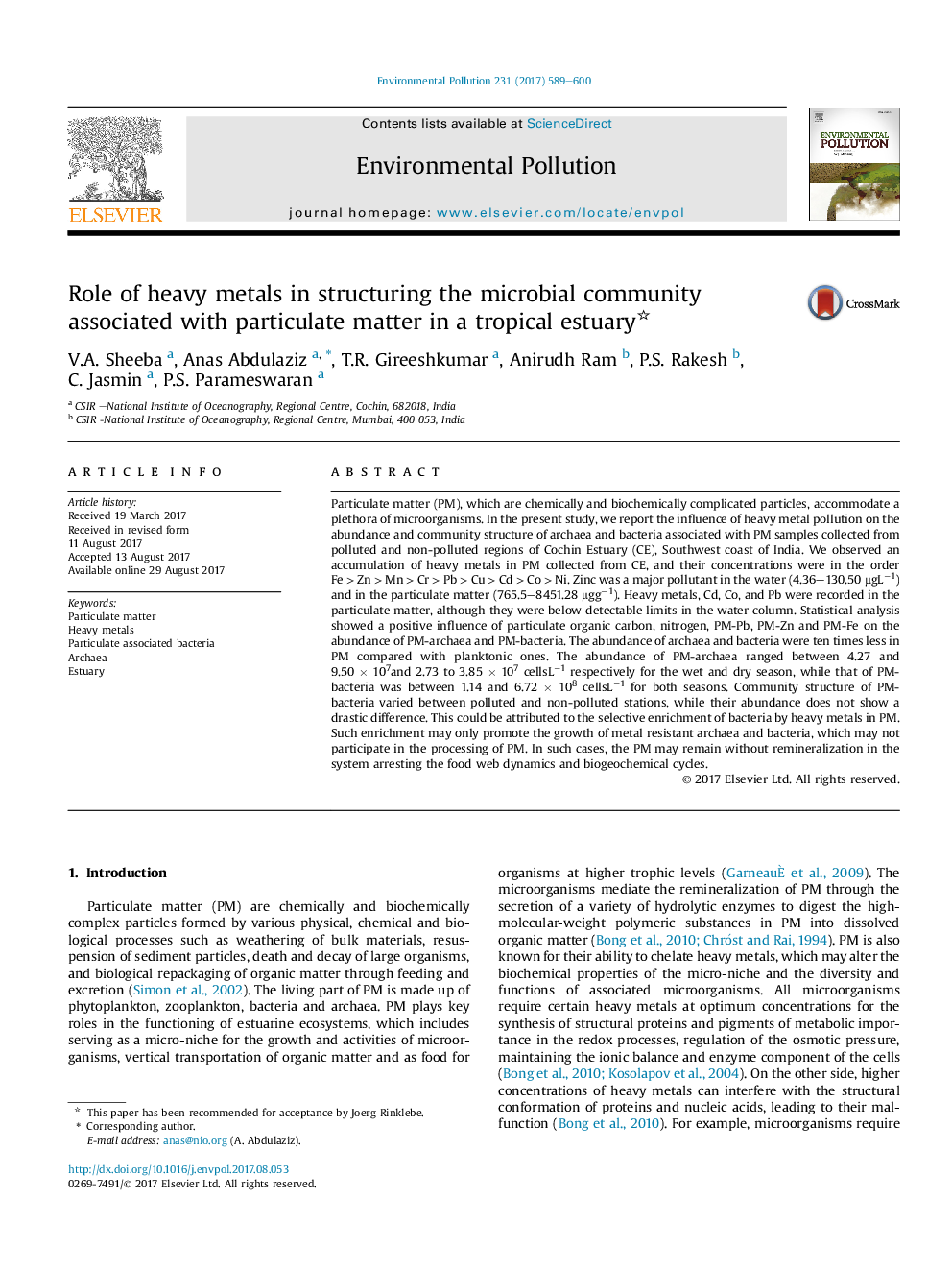| کد مقاله | کد نشریه | سال انتشار | مقاله انگلیسی | نسخه تمام متن |
|---|---|---|---|---|
| 5748597 | 1619142 | 2017 | 12 صفحه PDF | دانلود رایگان |
- Heavy metal pollution proliferated substantially in Cochin estuary.
- Heavy metal pollutants are accumulated in the particulate matter.
- Pollution affected the diversity of bacteria associated with PM.
Particulate matter (PM), which are chemically and biochemically complicated particles, accommodate a plethora of microorganisms. In the present study, we report the influence of heavy metal pollution on the abundance and community structure of archaea and bacteria associated with PM samples collected from polluted and non-polluted regions of Cochin Estuary (CE), Southwest coast of India. We observed an accumulation of heavy metals in PM collected from CE, and their concentrations were in the order Fe > Zn > Mn > Cr > Pb > Cu > Cd > Co > Ni. Zinc was a major pollutant in the water (4.36-130.50 μgLâ1) and in the particulate matter (765.5-8451.28 μggâ1). Heavy metals, Cd, Co, and Pb were recorded in the particulate matter, although they were below detectable limits in the water column. Statistical analysis showed a positive influence of particulate organic carbon, nitrogen, PM-Pb, PM-Zn and PM-Fe on the abundance of PM-archaea and PM-bacteria. The abundance of archaea and bacteria were ten times less in PM compared with planktonic ones. The abundance of PM-archaea ranged between 4.27 and 9.50 Ã 107and 2.73 to 3.85 Ã 107 cellsLâ1 respectively for the wet and dry season, while that of PM-bacteria was between 1.14 and 6.72 Ã 108 cellsLâ1 for both seasons. Community structure of PM-bacteria varied between polluted and non-polluted stations, while their abundance does not show a drastic difference. This could be attributed to the selective enrichment of bacteria by heavy metals in PM. Such enrichment may only promote the growth of metal resistant archaea and bacteria, which may not participate in the processing of PM. In such cases, the PM may remain without remineralization in the system arresting the food web dynamics and biogeochemical cycles.
304
Journal: Environmental Pollution - Volume 231, Part 1, December 2017, Pages 589-600
